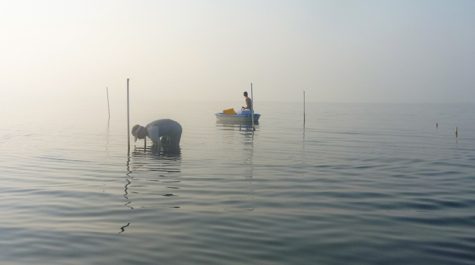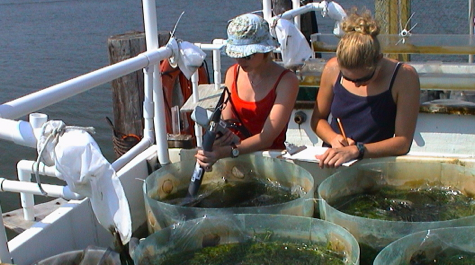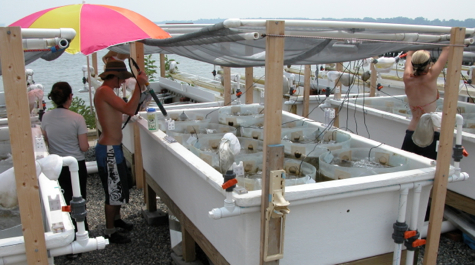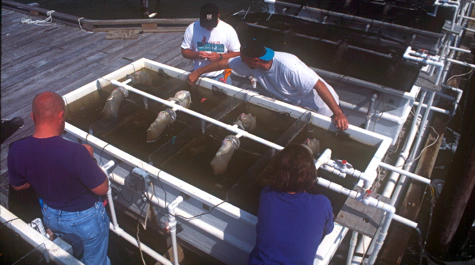Ecosystem effects of biodiversity loss could rival impacts of climate change and pollution
Loss of biodiversity appears to impact ecosystems as much as climate change, pollution, and other major forms of environmental stress, according to a new study from an international research team including Professor J. Emmett Duffy of the Virginia Institute of Marine Science.
The study, published online in today’s issue of the journal Nature, is the first comprehensive effort to directly compare the impacts of wild-species loss to the anticipated effects of a host of other human-caused environmental changes.
The results highlight the need for stronger local, national, and international efforts to protect biodiversity and the benefits it provides, according to the researchers from 9 institutions in the United States, Canada, and Sweden.
Duffy, a marine ecologist who has spent more than a decade studying the effects of biodiversity loss in estuaries and coastal seas, says “Our world is not only getting hotter and more polluted, it’s getting poorer biologically as wild species disappear. Our new study shows that these extinctions compromise healthy ecosystems—and their ability to provide for us—just as strongly as global warming and pollution do.”
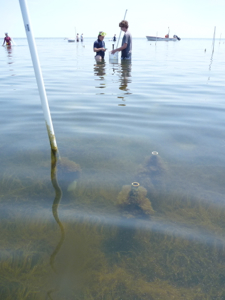
“We know that declines in seagrasses, forage fish, and other species can disrupt ecosystems that provide food and jobs for Chesapeake Bay communities," says Duffy. "Our new results show that the link between declining wild species and loss of productivity is both strong and general.”
A recent global study shows that 14% of the 72 known seagrass species are at an elevated risk of extinction, while 3 species qualify as endangered. Closer to home, the U.S. Fish and Wildlife Service currently lists 75 species as endangered or threatened in Virginia. Endangered or threatened species in Chesapeake Bay include the shortnose sturgeon, the Atlantic sturgeon, and all 5 species of sea turtles that frequent Bay waters. The American eel is under consideration for a threatened listing.
Biodiversity, Productivity, and Extinction
Studies over the last two decades have demonstrated that more biologically diverse ecosystems are more productive. As a result, there has been growing concern that the very high rates of modern extinctions—due to habitat loss, overharvesting, and other human-caused environmental changes—could reduce nature’s ability to provide goods and services like food, clean water, and a stable climate.
But until now, it’s been unclear how biodiversity losses stack up against other human-caused environmental changes that affect ecosystem health and productivity.
“Some people have assumed that biodiversity effects are relatively minor compared to other environmental stressors,” says biologist David Hooper of Western Washington University, the lead author of the Nature paper. “Our new results show that future loss of species has the potential to reduce plant production just as much as global warming and pollution."
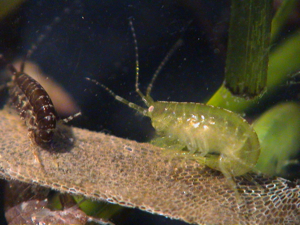
In their study, the international team combined data from a large number of published studies to compare how various global environmental stressors affect two processes important in all ecosystems: plant growth and the decomposition of dead plants by bacteria and fungi. The new study involved the construction of a database drawn from 192 peer-reviewed publications about experiments that manipulated the number of species and examined the impact on ecosystem processes.
The global synthesis found that in areas where local species loss this century falls within the lower range of projections (loss of 1 to 20 percent of plant species), there will likely be negligible impacts on ecosystem plant production, and effects of species loss will rank low relative to the impacts projected for other environmental changes.
In ecosystems where extinctions fall within intermediate projections (21 to 40 percent of species), however, species loss is expected to reduce plant production by 5 to 10 percent, an effect that is comparable in magnitude to the expected impacts of climate warming and increased ultraviolet radiation due to ozone loss from the atmosphere.
At higher levels of extinction (41 to 60 percent of species), the impacts of species loss ranked with those of many other major drivers of environmental change, such as ozone pollution, acid deposition on forests, and nutrient pollution. “Losing half the plant species in an area is like dousing it in acid rain”, says Duffy.
“Within the range of expected species losses, we saw average declines in plant growth that were as large as changes seen in experiments simulating several other major environmental changes caused by humans,” Hooper says. “I think several of us working on this study were surprised by the strength of those effects.”
Policy Implications
The strength of the observed biodiversity effects suggests that policymakers searching for solutions to other pressing environmental problems should be aware of potential adverse effects on biodiversity, as well, the researchers say.
“Loss of biological diversity due to species extinctions is going to have major impacts on our planet, and we better prepare ourselves to deal with them,” says University of Michigan ecologist Bradley Cardinale, another co-author. “These extinctions may well rank as one of the top five drivers of global change.”
Still to be determined is how diversity loss and other large-scale environmental changes will interact to alter ecosystems. “Although we’re emerging from economic recession, we’re falling deeper into a long-term biological depression. A major challenge looking forward is to predict how this biological impoverishment combines with other environmental challenges to impact natural ecosystems and society,” says Duffy.
Authors of the Nature paper, in addition to Hooper, Cardinale, and Duffy, are E. Carol Adair of the University of Vermont and the National Center for Ecological Analysis and Synthesis, Jarrett E.K. Byrnes of the National Center for Ecological Analysis and Synthesis, Bruce A. Hungate of Northern Arizona University, Kristen L. Matulich of University of California Irvine, Andrew Gonzalez of McGill University, Lars Gamfeldt of the University of Gothenburg, and Mary I. O’Connor of the University of British Columbia and the National Center for Ecological Analysis and Synthesis.
Funding for the study included grants from the National Science Foundation and the National Center for Ecological Analysis and Synthesis.
“This analysis establishes that reduced biodiversity affects ecosystems at levels comparable to those of global warming or air pollution,” says Henry Gholz, program director in the National Science Foundation’s Division of Environmental Biology, which funded the research.


